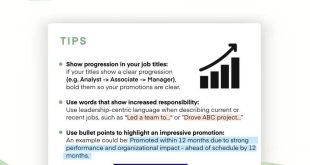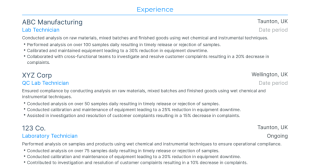Challenges Of Strategic Human Resource Management – HR strategy determines how HR and the workforce perform and the activities that will be carried out and improved in order to achieve results that advance the business goals of the enterprise.
By clicking the “Start Download” button, you agree to the Terms of Use and Privacy Policy. Start the download
Challenges Of Strategic Human Resource Management
To develop HR strategic planning and drive HR transformation initiatives, follow these five steps to develop an effective HR strategy that supports the enterprise’s business goals: Understand your organization’s mission, strategy and business goals. Identify important skills and abilities. Assess the current capabilities and skills of your talent and HR function, and identify gaps between the organization’s current and future needs. Develop HR objectives to address gaps and create benchmarks to measure successful strategic execution. Contact Human Rights Strategy.
Strategic Human Resource Management
CHROs must break down business goals into strategic impact and identify priorities that drive business success and create business value.
Creating a strategy is only the first step; Converting this into an HR strategy that you can successfully implement is quite a challenge. The process fails for a number of reasons, including a lack of visibility into business goals and inadequately defined measures of success. The volatile environment in recent years also requires strategic solutions as business needs change. Programming helps ensure that relevant strategies are implemented effectively. In line with the business strategy. HR strategy must always meet business strategy; It must coordinate both upstream (with business priorities) and downstream (with functional priorities). In a world where talent is seen as an organizational priority, HR strategy must inform and influence business strategy. Create goals as part of the strategy. Consider what drives long-term success for your HR function and how to prioritize goals to support enterprise strategy. Perhaps create a priority list of human rights initiatives and goals, and assess the gap between your current state and your key mission initiatives. Create benchmarks to measure successful strategic execution and compliance. Once you have developed goals, identify four to seven key performance measures that describe the current level of HR performance. Make sure these measures are specific, measurable and clearly linked to desired performance, and use the same metrics to measure future performance. Create a clear and concise statement that captures the strategic importance and summarizes the key objectives that will focus the HR function in the coming year. It empowers your organization’s HR professionals and employees to contribute positively to corporate goals. Coordinate communications with each stakeholder group to guide employees in their decision making.
It is always important for CHROs to prepare their organizations for the future of work (changing ways of working, influenced by changes in technology, production and society). But the pandemic has reshaped the future of work in new and unexpected ways – from the growing need for more human-centered employee value propositions and more inexperienced workers to the difficult diagnosis of workforce turnover. Here are 9 Future Work Trends for 2023: “Silent Recruiting” offers new ways to capture a flexible, on-demand talent mix at the forefront of competitive leadership and employee expectations managers need to support pursuing non-traditional candidates to expand the talent pipeline. Sustainable practices Organizations encourage DEI amid increased pressure Personal gain with employee support creates new information risk Algorithmic bias Hiring technology concerns Gen Z skills make more transparency in labor levels of social skills decrease with increasing volume of work trends that restore social skills, HR leaders. List the most important HR strategies. Focus while creating. This requires a three-step trend analysis: Identification: Identify trends that may affect how, when and where they work; Who or what works; Or even what work means in the near future. Description: Understand the relevance and impact of future work trends in your organization. Priorities: Engage with multiple stakeholders for a holistic process of selecting critical parameters. Ensure buy-in by prioritizing trends based on objective assessment and comprehensive analysis.
Adapting to the rapidly evolving COVID-19 situation requires C-suite leaders to regularly review and adapt their HR strategies and tactics to keep up with changes in business strategy and through strategic human resource management. Organizations ensure survival and growth. Gone are the days when strategic planning was a once-a-year, set-it-and-forget-it exercise. Today’s rapidly changing business environment requires HR strategies to adapt. Research shows: Most organizations (66%) say the biggest obstacle to effective strategic planning is a lack of alignment with business needs. Thirty-eight percent of HR leaders say their HR strategic planning process is not aligned with the business strategic planning calendar, and change is not driven by changes in the business plan. Eighty-eight percent of organizations cite the lack of relevant standards to track progress as one of the biggest barriers to effective strategic planning. Only 28% of HR leaders report reviewing their strategies more than once a year, and only 12% change them more than once a year. In order to respond to change and avoid wasting time in strategic planning, CHROs must identify and continuously monitor external and internal triggers for strategic review. To do this: Talk to stakeholders to determine business management strategies and practices for your organization. Use this early recognition to act quickly when they occur rather than delaying the rest of the business. Once established, proactively monitor business changes to ensure implementation can meet business needs as closely as possible and improve overall business results.
Succession Planning Basics: How It Works, Why It’s Important
Workforce planning is the process by which human resource leaders develop forecasts of their organization’s future workforce needs. Especially now, labor and business trends are influencing leaders’ expectations of strategic planning and results. For example, digital business transformation often changes key skill requirements, as well as planning and budgeting cycles. This is especially the case when HR adopts more common tactics for IT, such as agile methods and multidisciplinary fusion teams. The use of more technology solutions by HR will influence budgets and employees to invest in innovation. New ways of working require new talent profiles in all business units. Strategic human resource management will include more detailed information about the skills, abilities, knowledge and experience of the workforce to meet these needs. Five types of workforce planning: Workforce optimization: How do we optimize the distribution of tasks and processes and improve capacity utilization, productivity and other business outcomes? Optimizing Workforce Scheduling: How do we optimize workforce scheduling to meet consistency and optimal scheduling while ensuring we meet business goals? Operational Workforce Planning: How do we plan for the right amount and type of workforce to meet anticipated business goals and ensure we execute on that plan? Organizational modeling and change management: How do we allocate resources to our new organizational structure after major changes (eg restructuring, mergers and acquisitions, divestitures and downsizing)? Strategic Workforce Planning: What are the workforce implications of our organization’s short-term and long-term strategies? Will we have the right resources? If not, how can we get them?
The objectives of workforce planning include: Talent planning with a strategic business plan Identifying key workforce risks in the short, medium and long term Developing a talent strategy to reduce potential workforce risks in existing roles Creating a key skills map Ensuring talent availability for additional future business needs Current and Projected Talent Gaps Recruiting future talent for the Defense Department
It is important for CHROs to ensure that they and their HR leaders are dedicating time and resources to effectively conduct workforce planning, as some organizations have specific roles or teams dedicated to these efforts. Larger organizations may benefit from additional full-time staff in dedicated roles. Six important steps in strategic workforce planning: Preparation: Determine what, who, where and when. Understand business strategy: Identify strategic priorities, analyze emerging trends, translate priorities and trends into workforce competency needs, and prioritize workforce competencies. Risk assessment and analysis: Focus on strategic execution and prioritize key capabilities. Create a high-level plan: Create a high-level road map to address potential risks. Preparation for implementation: Documenting and communicating workforce plans, and impacting re-evaluations. Monitor the plan: measure, implement and develop the plan.
As part of strategic workforce planning, it is important for HR leaders to determine whether the organization has the capabilities and skills needed to achieve business goals. It is also important to include plans to address skills needs directly into the HR strategy. Skills are a fundamental component of workforce management in any industry. Improving and automating skills discovery and evaluation allows for greater organizational flexibility. Especially when there is uncertainty, or when the competition is fierce, organizations with good knowledge can quickly determine which opportunities are immediately possible and have more opportunities than when they need to invest. Research shows that building key skills and competencies is a priority for 59% of HR leaders by 2022 – and the challenge remains complex.
Pdf) Strategic Human Resource Management And Corporate Social Responsibility: Evidence From Emerging Markets
Strategic human resource management certification, benefits of strategic human resource management, examples of strategic human resource management, strategic human resource management practices, strategic human resource management pdf, human resource management strategic plan, strategic human resource management planning, strategic human resource management example, strategic human resource management book, human resource management challenges, model of strategic human resource management, process of strategic human resource management



